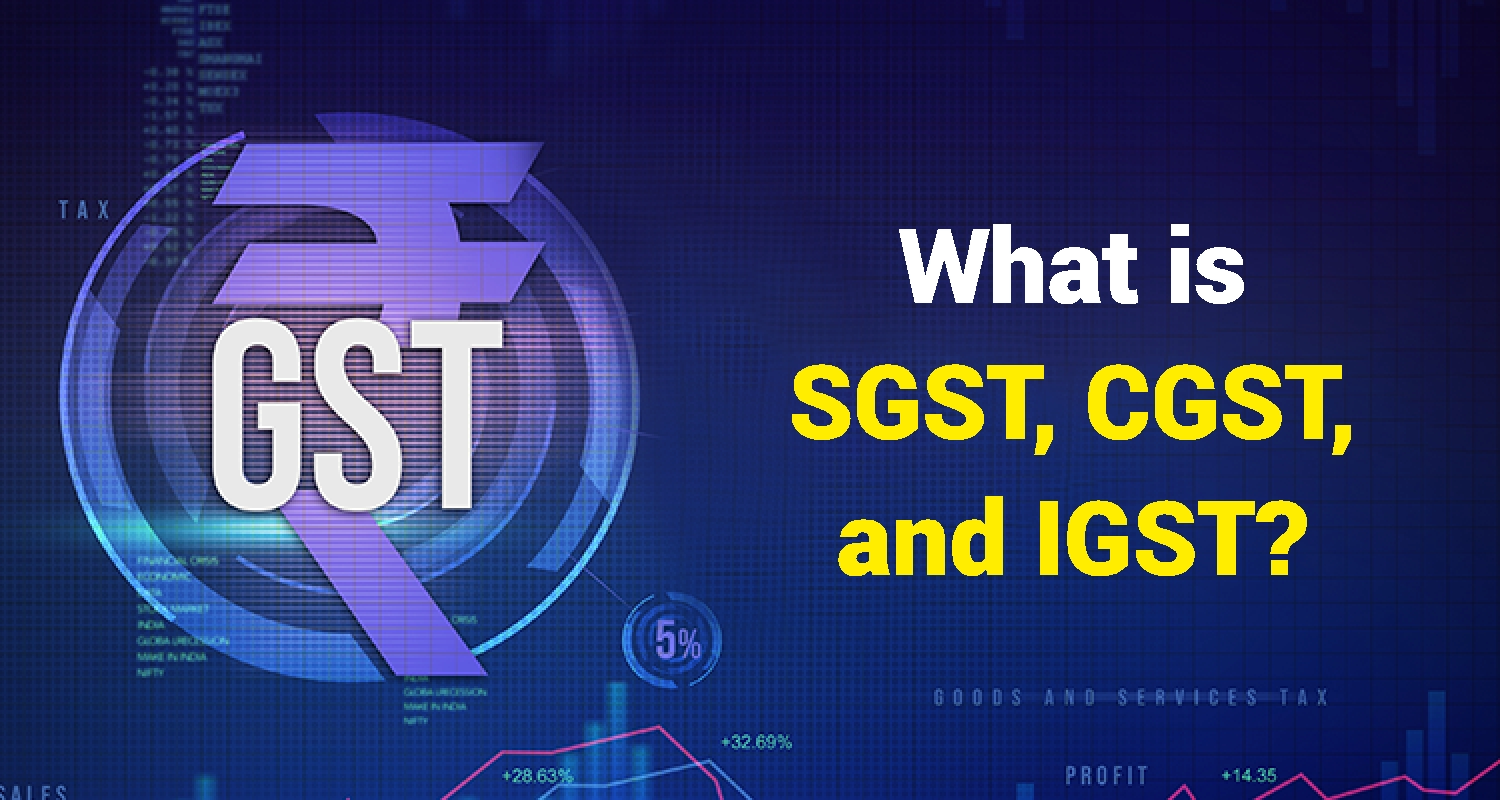SGST, CGST & IGST – Meaning, Differences & Challenges

The Goods and Services Tax (GST) in India is a unified tax structure that replaced multiple indirect taxes. It is categorised into SGST (State Goods and Services Tax), CGST (Central Goods and Services Tax), and IGST (Integrated Goods and Services Tax). Understanding these types of GST is crucial for businesses to ensure proper tax compliance and input tax credit utilisation.
What is GST and Why Was it Introduced?
GST was introduced to simplify India’s tax structure by merging indirect taxes into a single system. It ensures a uniform tax rate across states, reduces tax evasion and promotes ease of doing business. GST follows a destination-based taxation model where tax is levied at the point of consumption.
Breaking Down the GST Structure: SGST, CGST, and IGST
GST is divided into three components based on the nature of the transaction.
SGST (State Goods and Services Tax)
SGST full form is State Goods and Services Tax, which is imposed by state governments on transactions occurring within the same state.
- Collected goods and services consumed within the same state.
- Replaces state taxes like VAT, entertainment tax, luxury tax, etc.
- The revenue is assigned to the respective state.
CGST (Central Goods and Services Tax)
Regulated by the central government, CGST applies to the supply of goods and services within a state. The CGST full form is Central Goods and Services Tax.
- Collected alongside SGST in the same transaction.
- The central government collects the tax and retains the revenue.
- The CGST Act governs its provisions and tax rates.
IGST (Integrated Goods and Services Tax)
When goods or services move across state borders, IGST comes into effect. The IGST full form refers to Integrated Goods and Services Tax.
- Collected alongside SGST in the same transaction.
- The central government collects the tax and retains the revenue.
- The CGST Act governs its provisions and tax rates.
Sapna aapka. Business Loan Humara.
Apply NowKey Differences Between SGST, CGST, and IGST
Here are the key differences between the SGST, CGST and IGST:
|
Feature |
SGST |
CGST |
IGST |
|
Governing Authority |
State Government |
Central Government |
Central Government |
|
Applicable On |
Intra-state transactions |
Intra-state transactions |
Inter-state transactions |
|
Revenue Share |
It goes to the state government |
It goes to the central government |
Shared between centre and consuming state |
|
Rate Component |
50% of total GST rate |
50% of total GST rate |
Full GST rate |
How SGST, CGST, and IGST Work in Real Life: Examples with Calculation
The following are some of the examples with calculation:
Example 1: Intra-State Supply (SGST and CGST)
A trader in Maharashtra sells goods worth ₹10,000 to a buyer in Maharashtra. The applicable GST rate is 18% (9% SGST + 9% CGST).
SGST = ₹900 (9% of ₹10,000) goes to the Maharashtra government.
CGST = ₹900 (9% of ₹10,000) goes to the central government.
Example 2: Inter-State Supply (IGST)
A manufacturer in Karnataka sells goods worth ₹50,000 to a retailer in Delhi, and the GST rate is 18%.
IGST = ₹9,000 (18% of ₹50,000), collected by the central government.
Why is Understanding SGST, CGST, and IGST Important for Businesses?
Understanding these components ensures accurate tax filing and compliance while helping businesses claim input tax credits effectively.
Compliance and Filing Requirements
The following are some of the key compliance and filling requirements:
- Businesses must register under GST and obtain a GST Identification Number (GSTIN).
- Regular GST returns must be filed based on turnover and category.
- The input tax credit must be correctly claimed and adjusted.
- Proper invoicing with GST components is essential for compliance.
Common Challenges Faced by Businesses
Here are key common challenges faced by business:
- Understanding tax applicability for different transactions.
- Managing input tax credit for inter-state and intra-state transactions.
- Ensuring accurate GSTIN validation.
- Timely filing of GST returns to avoid penalties.
Recent Updates and Future of GST in India
The government is continuously working on simplifying the GST structure by reducing tax slabs and rationalising rates. Adopting AI, blockchain, and data analytics enhances compliance and curbs tax evasion. Expansion of the tax base is leading to higher revenue collection, while upcoming reforms aim to ease business compliance and improve the overall efficiency of the GST system.
Conclusion
GST, CGST (Central Goods and Services Tax), and IGST (Integrated Goods and Services Tax) form the backbone of India’s GST system, ensuring fair tax distribution between states and the central government. Understanding their applicability helps businesses remain compliant and leverage input tax credits efficiently. Additionally, IGST, CGST and SGST full forms highlight their role in intra-state transactions.
FAQs
Q1. What happens if a business fails to file GST returns?
Ans. Non-filing of GST returns leads to penalties, interest charges, and cancellation of GST registration.
Q2. Can SGST credit be used to pay CGST liability?
Ans. SGST credit can only be utilised against SGST or IGST liability, not CGST.
Q3. How is IGST distributed among states?
Ans. The centre collects IGST and then apportioned it to the state where the goods or services are consumed.
Q4. Is GST applicable on exports?
Ans. No, exports are zero-rated under GST, meaning no tax is levied on exported goods or services.
Q5. What is the maximum GST rate applicable in India?
Ans. GST rates vary by category, but the highest applicable rate is 28%.
Sapna aapka. Business Loan Humara.
Apply NowDisclaimer : The information in this blog is for general purposes only and may change without notice. It does not constitute legal, tax, or financial advice. Readers should seek professional guidance and make decisions at their own discretion. IIFL Finance is not liable for any reliance on this content. Read more



